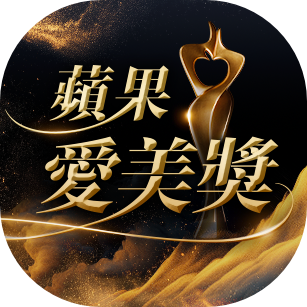近来在网路疯传的这段影片中,达赖喇嘛与一名小男童先是亲吻脸颊,接著又要小男孩亲吻他的嘴唇,但最引发争议的,则是达赖喇嘛后来伸出舌头,说「可以吸我的舌头」,但最后小男孩靠近时,他又后退还轻拍了一下小男孩肩膀,看似意指这只是个玩笑,但仍引起巨大的批评,甚至有人质疑达赖言行失当「让人作恶。」
但有11万粉丝追踪,曾旅居西藏的作家《Pazu 薯伯伯》昨则发文分析,质疑这也是一场网路世界的认知作战。
他附上一段未经修剪过的原始影片,也还原当时情况。他表示当时小男孩在一场见面会上,站在达赖面前,大家本以为他是想问问题,没想到小男孩却说「Can I hug you? 」(我可以抱你吗?)一度惹来哄堂大笑。

但有些年纪的达赖,一开始没听懂小男孩要求,一旁还有女士摇头,看似反对认为小朋友提问不当,但小男孩还很坚持,又说「It's a question.」(这就是提问啊。)直到达赖弄懂小男孩要求后,随即潇洒说道「Okay, come on!」(好吧,来吧。)
《Pazu 薯伯伯》表示,原本拍摄者是VOA 藏语部,片段分享后一直都没有人批评,直到十多天前,许多频道转载后,用合成的配音遮盖原本的对话,并用强烈的指控达赖行为不当。但《Pazu 薯伯伯》发现,这几个频道,成立时间都很晚,多半是近日才成立。
《Pazu 薯伯伯》表示,达赖最后并未真的让小男孩碰到他的舌头,而是在快碰到时缩回,还用手拍了小孩肩膀,像是告诉对方这只是个玩笑,接著慎重的对孩子说「谢谢。现在你应该看看那些创造和平、幸福的好人,不应该跟随那些总是杀人的人,你不应该看这些人。」随后两人拥抱,看似温暖的情境下,达赖又调皮的搔了小男孩腋窝,让小朋友格格笑了起来,最后大家也一起合照留念。
《Pazu 薯伯伯》说「我的好朋友西藏诗人及作家茨仁唯色在更早时已看过相关片段,根本不觉得有何问题,反而是尊者以慈悲和富有幽默的爱,给予众生哪怕是一个孩童所希望的关怀。」

《Pazu 薯伯伯》也以自己曾旅居西藏的经验,分享曾有游客问他,看到年长的藏人对著他们伸手,手指向天,然后吐舌,觉得很怪。但其实西藏旅游指南《Lonely Planet: Tibet》(2019 年,第 10 版)有一章在提及藏人风俗,就有特别写明这点:「Older country folk may stick out their tongue when they meet you, a very traditional form of respect that greeted the very first travellers to Tibet centuries ago.」(年长乡人在见到你时可能会伸出舌头,这是非常传统的尊重方式,几个世纪前第一批来藏旅客也受如此欢迎。)
他还说,在西藏文化中,舌头引伸出来的文化含意明显更多,绝非一面倒的负面印象,尤其对老一辈的藏人。不只是舌头有不同含意,连亲嘴也会有不同理解。例如在西方世界少见父母亲小孩嘴巴,但在西藏却很普遍。作家茨仁唯色也曾和他分享,表示藏人父母或长辈会用藏语跟他们说:「蔷布其、贝果度、喔节。」意思是脸贴脸、碰额头、亲嘴唇。有另一藏人分享,他以前在同学面前与祖母亲嘴道别,这种行为纯粹表达亲切的关心,但不懂这样文化的同学,看了却觉奇怪。
《Pazu 薯伯伯》说,对于熟悉西藏文化的人来说,例如我的西藏好朋友,以及观乎现场参与者的反应,看到该片段不单没有负面感觉,还觉得这个动作包含著慈爱与幽默。
《本文经 Pazu 薯伯伯(Facebook @ pazukong)授权刊登,未经同意请勿拷贝转载》
网络世界认知战:谈谈对尊者达赖喇嘛的攻击
尊者达赖喇嘛在印度达兰萨拉与百多名印度高中生见面,有环节让现场信众或参与者提问问题,提问者除了学生,还有小孩。一名小孩站在米高峰前询问尊者,本来以为是甚么人生问题,但小孩却问:「Can I hug you? 」(我可以抱你吗?)惹来哄堂大笑。
尊者见小孩发问后众笑,先是不明所以,用藏语问工作人员:「(小孩)说甚么?」工作人员以藏语解释:「尊者,小孩问可以拥抱吗?」尊者仍没会意,问:「甚么?」工作人员第二次把问题翻译成藏语:「小孩问可否拥抱。」另一名工作人员用藏语补充翻译,但这次把拥抱一词改用英文原字 hug:「小孩问可以 hug 吗?」
为甚么这样简单的提问,会使尊者如此不解?一来据闻年届 87 的尊者听力不太好,二来这个「拥抱」要求就很不常见,起码藏人肯定不敢提出。在法会,信众与法座上的上师一向都会保持距离。过往尊者的法会有小孩及青年的提问环节,分享他们学业或朋友之间的困难,请求尊者解答并提供人生建议,但从来未听过有人要求拥抱。若仔细留意,小孩发问后,旁边一位印度女士就笑著摇头,手掌向上微微摇摆,温柔地暗示小孩提问不当。
小孩似乎怕尊者不答应,还说了一句:「It's a question.」(这就是提问啊。)
尊者听明白后,给了出乎意料的回应,惹来哄堂大笑,夹杂掌声。他说:「Okay, come on!」(好吧,来吧。)
在原来的片段,清楚看到台下有大批身穿毕业袍的学生,台上有多名信众及职员,尊者是在大庭广众前叫小孩亲自己。拍摄片段的机构是 VOA 藏语部,本来片段一直没有引起任何批评,但在十多天前(即 2023 年 3 月底)忽然被一大堆以合成英语(text to speech)作旁白的 YouTube 频道转载,合成声音遮盖原来对话,合成声音是抖音上最常用的广播女声,屏幕只截取放大尊者与小孩二人的场面,并直接用上很强烈的指控。
可疑的是,其中一些剪辑并转载片段的 YouTube 频道颇不寻常。我整理了 YouTube 上几个最早期发布剪辑影片的户口,记录影片上载日期及频道成立日期。
1. K 字头频道:头像为达赖喇嘛笑脸,频道成立日期为 2023 年 3 月 31 日,影片上传日期为 2023 年 3 月 31 日。
2. R 字头频道:头像为 R 英文字,频道成立日期为 2023 年 4月 1 日,影片上传日期为 2023 年 4 月 1 日。
3. I 字头频道:头像为非洲女性照片,频道成立日期为 2023 年 4月 6 日,影片上传日期为 2023 年 4 月 7 日。
4. F 字头频道:头像为 F 英文字,频道成立日期为 2020 年 1 月 1 日,影片上传日期为 2023 年 4 月 9 日。
以上户口除了第 4 个外,其余都是刚成立便马上发布指控达赖喇嘛片段,没有其他活动。至于那个三年前元旦日开启的户口,三年间没有发布其他影片,亦没有订阅其他频道。我没有抖音户口,目前未知在抖音上该影片传播的轨迹。
不知有多少人看过最原始没有修剪的影片,亦不知有多少人有参加过法会,我在评论区放了一个不经剪辑的原始片段,大家可看,自行判断。
* * *
在片段中可见,尊者达赖喇嘛容许小孩走到法座上后,跟小孩说了以下的话:「First here. 」说罢指指自己右脸颊,小孩亲了一下。跟著尊者指指自己嘴唇,说:「Here also.」示意小孩可以亲亲嘴,说罢在场人士都笑了起来并拍手。之后他说了一下:「And suck my tongue.」尊者伸出舌头,但没真的让小孩亲下去,反而像做鬼脸,缩回舌头,并用右手开玩笑地拍了小孩左肩一下,小孩一边笑一边看著尊者,尊者握著小孩手,说:「Thank you, thank you!」并把小孩手触碰自己脸颊。
还有后续,尊者跟小孩说:「Thank you. Now you should look those good human beings who create peace, happiness, should not follow those human beings who are always killing other people. You should not look these people.」(谢谢。现在你应该看看那些创造和平、幸福的好人,不应该跟随那些总是杀人的人,你不应该看这些人。)
小孩听罢点一点头,尊者再让小孩给他一个拥抱,小孩主动张开双手,投入尊者怀中。然后出现了一幕很搞笑的片段,却居然未见批评者提及。片段清楚显示,当小孩最后拥抱尊者时张开了手臂,尊者顺便伸出右手搔小孩的腋窝,小孩发痒缩肩膊,忍不住笑了出来,在场人士见状,同样哈哈大笑起来。法会完结后,小孩、学生与信众亦一起跟尊者合照留念,小孩高兴地坐在尊者前方。
我的好朋友西藏诗人及作家茨仁唯色在更早时已看过相关片段,根本不觉得有何问题,反而是尊者以慈悲和富有幽默的爱,给予众生哪怕是一个孩童所希望的关怀。
* * *
见不少人谈论「suck my tongue」此话,还有人居然称这是「湿吻」、「猥琐」。然而我多次翻看片段,用最客观的观察及描述,怎么可能叫做「湿吻」,连半点相似的动作也无,「湿吻」的指控是完全夸张及失实。至于有人称之为「猥琐」,由于这是主观观感,建议读者自行观看影片再作判断,但起码我完全看不出有任何色情之意。
既然有不少人集中讨论舌头,我又说一个小故事。
我曾旅居西藏多年,经常有游客问我一件事,说在拉萨八廓街时,忽见有些年长的藏人会对他们伸手(手指向天),并伸出舌头,觉得很怪,有人还以为伸手是要钱呢。但其实西藏有一个古老传统,待客时会伸出手,手掌向天,手指朝上,并同时伸出舌头,以示尊重。著名的旅游指南《Lonely Planet: Tibet》(2019 年,第 10 版)有一章提及藏人风俗还特别写明这句:「Older country folk may stick out their tongue when they meet you, a very traditional form of respect that greeted the very first travellers to Tibet centuries ago.」(年长乡人在见到你时可能会伸出舌头,这是非常传统的尊重方式,几个世纪前第一批来藏旅客也受如此欢迎。)
《Tibet: The Bradt Travel Guide》(2018 年,352 页)亦有类似描述:「In old Tibet, a respectful form of humble greeting was to extrude the tongue (which had better be pink, because the tongue of an evil person was reckoned to be brown or black). The gesture is still used in remote parts of Tibet.」(在古老的西藏,尊重谦卑问候的方式是伸出舌头(最好是粉红色的,因为邪恶之人的舌头被认为是褐色或黑色)。这种身体动作在西藏偏远地区仍然使用。)
西藏文化中,舌头引伸出来的文化含意明显更多,绝非一面倒的负面印象,尤其对老一辈的藏人。不只是舌头有不同含意,连亲嘴也会有不同理解。例如在西方世界少见父母亲小孩嘴巴,但在西藏却很普遍。唯色分享道,父母或长辈会用藏语跟他们说:「蔷布其、贝果度、喔节。」意思是脸贴脸、碰额头、亲嘴唇。有另一藏人分享,他以前在同学面前与祖母亲嘴道别,这种行为纯粹表达亲切的关心,但他的同学却觉奇怪。
对于熟悉西藏文化的人来说,例如我的西藏好朋友,以及观乎现场参与者的反应,看到该片段不单没有负面感觉,还觉得这个动作包含著慈爱与幽默。
照片:网络组图,见到尊者在接见不同宗教背景的访客时,常见的打招呼方式。
------
His Holiness the Dalai Lama met with more than a hundred Indian high school students in Dharamsala, India. During the event, attendees were allowed to ask questions, which included not only students but also young children. One child stood in front of the microphone and asked what was originally thought to be a question about life or religion. Instead, the child asked, "Can I hug you?" causing laughter in the room. His Holiness, initially not understanding the question due to the laughter, asked in Tibetan what the child had said. A staff member translated, "Your Holiness, the child asked if he could hug you?" The Dalai Lama still didn't understand and asked again, "What?" The staff member translated the question into Tibetan a second time, and another staff member added the English word "hug" to the translation. There were two reasons for His Holiness's confusion: one, he is 87 years old and reportedly hard of hearing; two, such a request for a hug is quite unusual, especially for Tibetans who would not dare to ask. During religious gatherings, there is usually a distance maintained between the audience and the spiritual leader on the stage. Children and young people often ask questions about their studies or friendships during these seminars, seeking advice and guidance, but never before has anyone asked for a hug. When the child asked the question, an Indian woman nearby gently shook her head with her palm up, subtly suggesting that the question was inappropriate. Fearing that the Dalai Lama might not agree, the child added, "It's a question." After understanding the question, His Holiness gave an unexpected response, causing more laughter and applause. He said, "Okay, come on!"
Perception Warfare in the Cyber World: Discussing the Attacks on His Holiness the Dalai Lama
In the original footage, many students in graduation gowns can be seen, along with numerous staff and attendees. His Holiness invited the child to approach him in front of everyone. The video was taken by the VOA Tibetan Service and had not attracted any criticism until it was suddenly reposted on numerous YouTube channels with synthesized English voiceovers (text-to-speech), which obscured the original dialogue. The screen only showed a close-up of His Holiness and the child, accompanied by strong accusations.
Some of the YouTube channels reposting and editing the footage are quite unusual, I listed out the earliest channels which posted the edited video, together with their upload date and channel creation date.
1. Channel starts with K: Profile picture is the Dalai Lama's smiling face, channel creation date is March 31, 2023, video upload date is March 31, 2023.
2. Channel starts with R: Profile picture is the letter R, channel creation date is April 1, 2023, video upload date is April 1, 2023.
3. Channel starts with I: Profile picture is a photo of an African woman, channel creation date is April 6, 2023, video upload date is April 7, 2023.
4. Channel starts with F: Profile picture is the letter F, channel creation date is January 1, 2020, video upload date is April 9, 2023.
Except for the fourth account, the others were created and immediately uploaded the accusatory footage of the Dalai Lama, with no other activity. The account created on New Year's Day in 2020 has not uploaded any other videos nor subscribed to any other channels. The trajectory of the video's spread on TikTok is currently unknown as I do not use Tiktok.
It is unclear how many people have seen the original unedited video or attended the religious gathering. In the comments section, an unedited version of the original video was shared for everyone to watch and judge for themselves.
* * *
In the video clip, it can be seen that the respected Dalai Lama allowed the child to approach him on the stage, and said to the child, "First here." He pointed to his right cheek, and the child gave him a kiss. Then the Dalai Lama pointed to his lips and said, "Here also," indicating that the child could kiss his mouth. Everyone in the audience laughed and applauded. Afterwards, he said, "And suck my tongue." The Dalai Lama stuck out his tongue but did not actually let the child kiss it. Instead, he retracted his tongue as if making a funny face, playfully patted the child's left shoulder with his right hand, and the child laughed while looking at the Dalai Lama. The Dalai Lama held the child's hand, saying, "Thank you, thank you!" and touched the child's hand to his own cheek.
There's more. The Dalai Lama told the child, "Thank you. Now you should look at those good human beings who create peace and happiness, and not follow those human beings who are always killing other people. You should not look at these people." The child nodded, and the Dalai Lama let the child give him a hug. The child opened his arms and embraced the Dalai Lama. Then a funny scene occurred, which surprisingly has not been mentioned by critics. The clip clearly shows that when the child hugged the Dalai Lama with open arms, the Dalai Lama playfully scratched the child's armpit with his right hand, causing the child to laugh and shrug from the tickling. The audience laughed along.
After the event, the child, students, and followers took a group photo with the Dalai Lama, and the child happily sat in front of him.
My good friend, the Tibetan poet and writer Tsering Woeser, had seen the clip earlier and did not think there was any problem. On the contrary, the Dalai Lama showed compassion and humorous love, giving care to all beings, even a child.
Many people have discussed the phrase "suck my tongue," and some have even called it a "tongue kiss" or "lewd." However, after watching the clip multiple times with an objective observation and description, I cannot see how it could be called a "tongue kiss," as there is not even a hint of a similar action. The accusation of a "tongue kiss" is completely exaggerated and untrue. As for the term "lewd," since this is a subjective impression, I suggest readers watch the video themselves and make their own judgment. At the very least, I see no hint of any sexual intent.
Since many people are focused on the tongue, let me share a little story.
I once lived in Tibet for many years and often had tourists ask me why some older Tibetans would stretch out their hands (pointing to the sky) and stick out their tongues when greeting them on Barkhor Street in Lhasa. Some even thought the outstretched hand was asking for money. However, in Tibet, there is an ancient tradition of showing respect by extending one's hand, palm up, fingers pointing to the sky, and simultaneously sticking out the tongue. The famous travel guide "Lonely Planet: Tibet" (2019, 10th edition) has a chapter mentioning this Tibetan custom, stating: "Older country folk may stick out their tongue when they meet you, a very traditional form of respect that greeted the very first travelers to Tibet centuries ago."
"Tibet: The Bradt Travel Guide" (2018, p. 352) also has a similar description: "In old Tibet, a respectful form of humble greeting was to extrude the tongue (which had better be pink, because the tongue of an evil person was reckoned to be brown or black). The gesture is still used in remote parts of Tibet."
In Tibetan culture, the meaning of sticking out one's tongue is clearly more diverse and not solely negative, especially for the older generation. Not only does the tongue have different meanings, but even kissing can be interpreted differently. For example, in the Western world, it is rare for parents to kiss their children's mouths, but in Tibet, it is quite common. Woeser shared that parents or elders would say "face-to-face, touching foreheads, kissing lips" to their children, a way of showing affection. Another Tibetan shared that he used to say goodbye to his grandmother with a kiss on the lips in front of his classmates. This action was simply expressing affection and care, but his classmates found it strange.
For those familiar with Tibetan culture, such as my Tibetan friends and considering the reactions of the participants at the scene, watching the clip does not evoke any negative feelings; instead, it conveys a sense of compassion and humor.
《本文经 Pazu 薯伯伯(Facebook @ pazukong)授权刊登,未经同意请勿拷贝转载》

爆料信箱:news@nextapple.com
★加入《壹苹》Line,和我们做好友!
★下载《壹苹新闻网》APP
★Facebook 按赞追踪
 點擊閱讀下一則新聞
點擊閱讀下一則新聞







